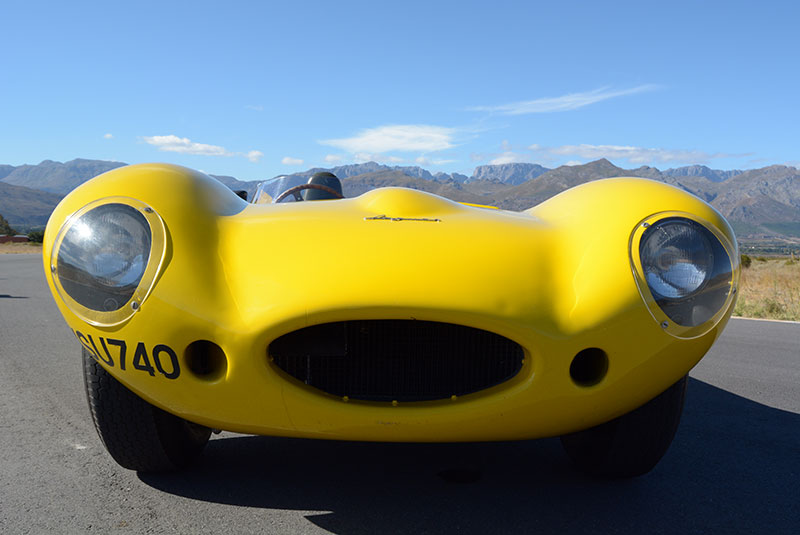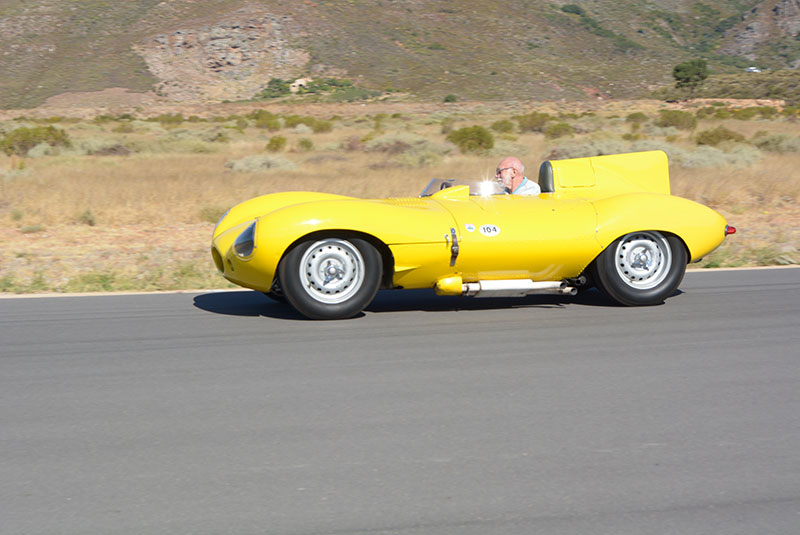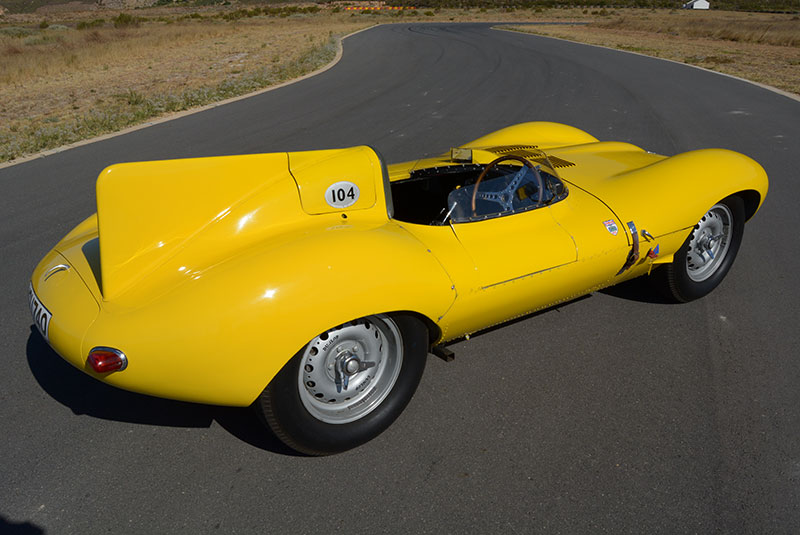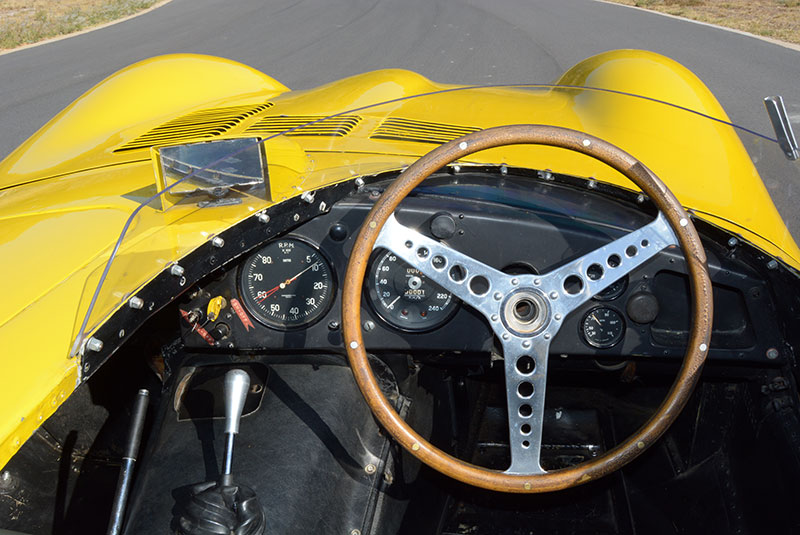
28 Apr COLLECTION IN ACTION – D
An alphabetical series of short driving impressions of some of the museum’s car collection. This month we go behind the wheel in a ‘D’ for D-Type.
The D-Type Jaguar is one of motor sport’s most successful and iconic race cars, having scored a hat-trick of victories at the famous Le Mans 24-Hour race from 1955-57. FMM is home to one of the cars that took part and finished in the latter two of those races, chassis number XKD 573 that was entered on both occasions by Equipe Nationale Belge. With the annual endurance classic next taking place on 23-24 June, an opportunity to drive the 60-year-old survivor was one to be savoured. Driven by Freddy Rousselle and team principal Jacques Swaters, in 1956 the car finished fourth, a position repeated in 1957 when Rousselle and Paul Frére were at the wheel.
Owned by the Woods Trust and entrusted to FMM for upkeep and display, final proof has been found to confirm that although entered and run by the Belgian national racing team in 1956, the car was in fact a ‘works’ car. However, following a fire in February 1957 that nearly destroyed Jaguar’s Browns Lane factory, the company withdrew its racing team, so all five cars that competed in that year’s race were officially privateer entries.
The D-Type – introduced in late 1954 and built/raced during the following three years – was ground-breaking for its time, yet utilising many production-based components. Subframe-mounted independent front suspension was attached to a monocoque centre tub and the aerodynamically designed bodywork incorporated a stabilising fin. All-round disc brakes were a first and the alloy road wheels were retained by knock-off spinners. Powered by Jaguar’s iconic 3,4-litre in-line, six-cylinder, twin-cam XK engine that produced 186 kilowatts at 6 000 r/min, which was later improved to 212 kW at 5 750, the D-Type was capable of speeds reaching 280 km/h. At its Le Mans debut in 1954, it was measured to be almost 20 km/h faster down the Mulsanne Straight than the 4,9-litre V12 Ferrari.
Distinctive in its bright yellow paintwork, this rare short-nosed D-Type is still in its ‘as last raced’ condition, which simply adds to the car’s charisma – let alone value.
Stepping over the high sill and dropping down into the comfy leather bucket seat, gripping the wood-rimmed steering wheel and looking out over the louvred bonnet with its raised wheelarches and matching bonnet bulge was sheer bliss. Fresh from a clutch rebuild, XKD 573 fired up with a harsh, resounding crackle from its dual exhausts pinned alongside the near-side bodywork.
Once I had overcome the stiff, in/out clutch action by applying more revs, the 60-year-old D-Type simply rushed onwards, the gearshift proving to be mechanically precise. Although peak torque arrives above 4 000, once over 3 000 the motor really kicks in and the car simply rushes forward, the sensation heightened by being windswept as the shallow full-width screen offers little protection. The unassisted steering is not heavy and fairly direct while the brakes are reassuringly firm and responsive but, typical of cars of the period, applying power early on exiting corners simply caused the 6.50×16-inch Dunlops to step sideways, necessitating caution and concentration to avoid spinning off into the undergrowth. The likes of Rousselle, Swaters and Frére driving flat out in daylight and night-time, in rain and sun for 24 hours calls for the utmost admiration.
Currently on view in Hall D, this significant Jaguar is one of FMM’s most prized exhibits by virtue of its track record and provenance, a tribute to the men who designed and built it and to the many famous drivers who helped make the D-Type one of the most revered cars in motor sport history. MM






